
by logisticsplus | Nov 16, 2015 | News
 According to a U.S. Department of Commerce report, over 185,000 U.S. companies imported foreign goods in 2012, an increase of more than 10 percent from 2009. The majority of these businesses were small or medium-sized companies that may, in fact, lack the necessary resources to be a successful importer. If your business imports – or is planning to import – foreign goods, here are ten (10) keys to successfully navigating the complex waters of international trade.
According to a U.S. Department of Commerce report, over 185,000 U.S. companies imported foreign goods in 2012, an increase of more than 10 percent from 2009. The majority of these businesses were small or medium-sized companies that may, in fact, lack the necessary resources to be a successful importer. If your business imports – or is planning to import – foreign goods, here are ten (10) keys to successfully navigating the complex waters of international trade.
- Get a Formal Contract
Before purchasing and importing foreign products, make sure you issue a formal written document that includes all of the significant issues to the buyer and seller, such as product acceptance, warranties and dispute resolution procedures. Otherwise, you will expose your business to significant risks which may be very difficult to control
- Familiarize Yourself with U.S Customs Policies & Procedures
It is essential that you fully understand whether or not importing your product will require a license or permit. Although the U.S Customs and Border Protection (CBP) does not generally require importers to have a license or permit, there are other agencies that may require one; examples include the FDA, USDA and the ATF. Furthermore, there are certain goods that may be subject to specific requirements with regards to their testing, marketing, certification, labeling, packaging and documentation. To get more acquainted with these requirements, you can visit www.cbp.gov (or see key #10 below).
- Make Sure You Understand Incoterms
This may be a no-brainer, but it is always important to understand the deal in which you are getting yourself. Suppliers are obliged to submit a term of sale alongside each quotation submission. It is your responsibility to fully understand the costs, rights and obligations included in these Incoterms. This will also help you estimate your costs more accurately (if you’re confused about Incoterms, see key #10 below).
- Classify Your Products Properly
The harmonized tariff schedule classification (HTS) of a product is what determines the rate of duty applied to it. Therefore, it is very important that you assign the correct classification to your products. This will not only reduce your duties, but will also ensure you don’t face additional obstacles when your goods enter the United States. To learn more about this process, talk to someone familiar with HTS classifications (or see key #10 below).
- Consider Preferential Duty Programs
There are many preferential duty programs out there that can help you avoid certain duties and reduce your transaction costs. The Generalized System of Preferences, in addition to free trade agreements that the U.S. has in force with 20 countries, can give you a competitive advantage in the global market place (or see key #10 below).
- Research Import Quota Requirements
These refer to quotas that limit the amount of imported commodities into the United States within a specified amount of time. Some quotas allow goods to continue entering the United States after the limit has been reached but at a higher rate of duty, these are called tariff rate quotas (If you’re not sure if your product has an import quota, then see key #10 below).
- Find a Reliable and Legitimate Foreign Seller
Before making any final transactions, you need to ensure that the seller which you are dealing with is reliable. This is when you should conduct extensive research in terms of their reputation, financial status, and overall history. Doing business with unfamiliar suppliers can be risky, so you have to always be prepared.
- Pick the Right Insurance Coverage
There are many things that could happen to your goods on their way to their final destination – from severe weather conditions to rough handling by carriers, you can never be over-prepared. It is, therefore, very crucial that you accurately determine the type, amount, and extent of insurance coverage that you may need. You should also know who will be responsible for insuring your goods when they are not in your possession. Always make sure you have proof of insurance from your sellers, and never only take their word for it.
- Keep Records of Everything
U.S. CBP laws require importers to keep records of all documents relating to imports for a period of five years. These records may be inspected at any time in order to check your compliance status to all U.S. CBP laws (if you’re not sure what documents to keep, see key #10 below).
- Hire an Experienced Customs Broker!
If you’re new to importing – or even if you’re not – you may want to consider hiring a freight forwarder that is also a professional customs broker, like Logistics Plus (LP), to help you with all of your importing procedures. The LP Customs Broker Solutions team can help simplify the process, and ensure you abide by all rules and regulations, thus minimizing any potential future problems. If you have any questions specific to import customs rules or duties, feel free to contact Gretchen Blough, our Customs Brokerage Manager, at gretchen.blough@logisticsplus.com.
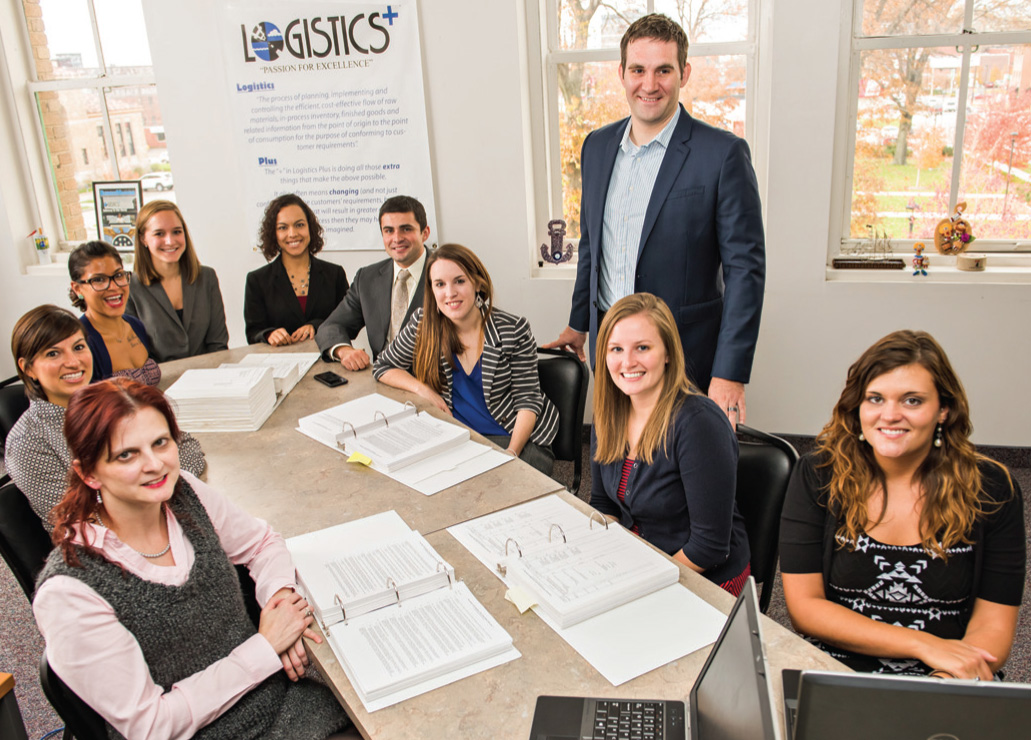
If you’re ready to import a shipment or need help with an international air or international ocean freight quote, please send an email to imports@logisticsplus.com (or click the button below).

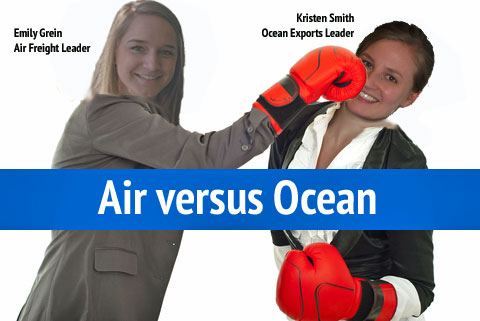
by logisticsplus | Aug 21, 2015 | News
 Logistics Plus (LP) provides logistics services within and across all national borders and using all modes of transportation. Air freight forwarding and ocean freight forwarding services come into play more often than not on international shipments. On the LP International team, Emily Grein is our lead air freight specialist and Kristen Smith is our lead ocean freight specialist. We asked these two to square-off in order to better understanding the pros and cons of shipping air freight versus ocean freight. Although Emily, Kristen, and their teams are intimately immersed in either air or ocean transportation, their top priority is always to ensure the right mode is selected for the needs of each customer (which, in some cases, can include both ocean and air).
Logistics Plus (LP) provides logistics services within and across all national borders and using all modes of transportation. Air freight forwarding and ocean freight forwarding services come into play more often than not on international shipments. On the LP International team, Emily Grein is our lead air freight specialist and Kristen Smith is our lead ocean freight specialist. We asked these two to square-off in order to better understanding the pros and cons of shipping air freight versus ocean freight. Although Emily, Kristen, and their teams are intimately immersed in either air or ocean transportation, their top priority is always to ensure the right mode is selected for the needs of each customer (which, in some cases, can include both ocean and air).
When considering the choice between air and ocean freight forwarding, the top three factors to consider are generally reliability, speed, and cost. Whether you ship via air or via ocean, each requires some level of expertise to understand how these three factors will be impacted; and each has a different set of rules, regulations, and best-practices practices.
RELIABILITY
Airfreight is more convenient and faster even though flights can get delayed by weather and other circumstances. There are usually daily air flights back and forth and between major cities around the world. Ocean carrier sailings, on the other hand, are generally weekly or every other week depending upon the trade lane. This means that if a cut-off time is missed at a seaport, there will be a longer delay. There is also the possibility of exposure to weather conditions and goods being damaged due to the wait at the ports of transfer. Lastly, the longer, more stringent schedule of ocean service may not always line up with business expectations.
SPEED
It should be no surprise that shipping by air is usually much faster than by ocean. Air shipments can take up to a few days while shipping by ocean can take anywhere from a few weeks to months to arrive; however, more efficient routes are being created and ships are getting faster, meaning shipments crossing the ocean are taking less time.
COST
For many businesses, cost can be a very crucial factor which can influence the decision to ship by air or ocean freight. Shipping your items by air is more expensive than ocean freight. Expect to pay between 5-6 times more to ship by air versus ocean transportation. With both air and ocean, costs are directly related to the cargo weight, dimensions, value, and distance being shipped. Generally, larger and heavier shipments are often cheaper to ship by ocean, while smaller more valuable shipments are better to ship by air.
The table below shows a few items to consider when deciding whether to ship via air or ocean:

No matter which mode you ship, customs regulations, duties, and fees will come into play on all international imports or exports. Working with a reliable freight forwarder that has in-house customs broker solutions will go a long way towards ensuring your shipment receives expedited customs clearance and that your import/export fees are minimized.
If you need help with air freight forwarding, ocean freight forwarding, imports/exports, or global trade compliance, work with Logistics Plus and enjoy the benefits of having an award-winning supply chain partner on your side.

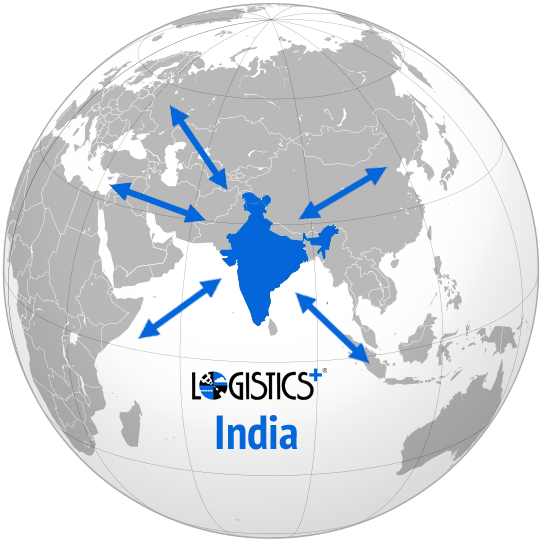
by logisticsplus | Jul 24, 2015 | News
 The United States International Trade Commission just released its updated “The Year in Trade 2014” report. The report, which covers global trade trends and activities, indicated that the value of U.S.-India two-way merchandise trade has increased 5% since 2013. In 2014, merchandise exports to India were valued at $21.6 billion. Leading U.S. exports to India included diamonds, aircraft and parts, gold, and coal. 2014 imports from India were valued at $45.2 billion, with non-industrial diamonds, certain medicaments, petroleum-related products, food, apparel, chemicals, and steel products all leading the way. The report went on to say that the U.S. and India continue an ongoing dialogue to improve trade relations going forward.
The United States International Trade Commission just released its updated “The Year in Trade 2014” report. The report, which covers global trade trends and activities, indicated that the value of U.S.-India two-way merchandise trade has increased 5% since 2013. In 2014, merchandise exports to India were valued at $21.6 billion. Leading U.S. exports to India included diamonds, aircraft and parts, gold, and coal. 2014 imports from India were valued at $45.2 billion, with non-industrial diamonds, certain medicaments, petroleum-related products, food, apparel, chemicals, and steel products all leading the way. The report went on to say that the U.S. and India continue an ongoing dialogue to improve trade relations going forward.
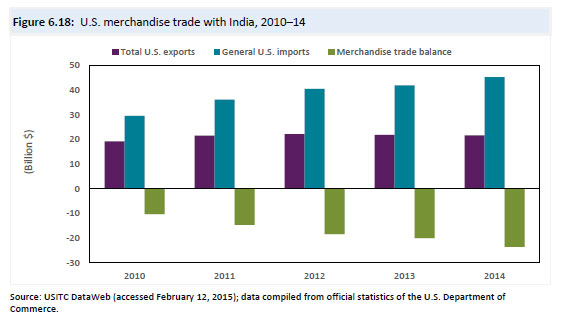
While these numbers may seem impressive (India is the 11th largest foreign trading partner with the U.S.), some economists forecast that these numbers could double in the next five years. Contributing to this growing trend is the fact that India is the world’s largest democracy and the second-most populous country in the world. The country has a burgeoning urban middle class and has made great strides in fields such as information technology. Its large, skilled workforce makes it a popular choice for international companies seeking to outsource work.
If your company imports or exports merchandise from India, you should consider working with Logistics Plus. In the U.S. we have more than a dozen locations around the country that can help you with your transportation and logistics needs, and our Customs Broker Solutions staff can also help you clear customs for imports at any port in the United States. Additionally, we have six offices in India located in the cities of New Delhi, Bangalore, Chennai, Jalandhar, and Mumbai.
If you’re located in the U.S. and interested in learning more, please contact us or use our international quick quote form if you have an upcoming shipment. You can also call 1.866.564.7587 or email quotes@logisticsplus.com with any questions. If you’re located in India, you can complete our India logistics solutions request form or use our international quick quote form if you have a shipment. You can also call our New Delhi main office at +91.124.474.9200 or email sundreysh.sarup@logisticsplus.com with specific questions.
As always, you can find any of our worldwide employees in our online global directory.

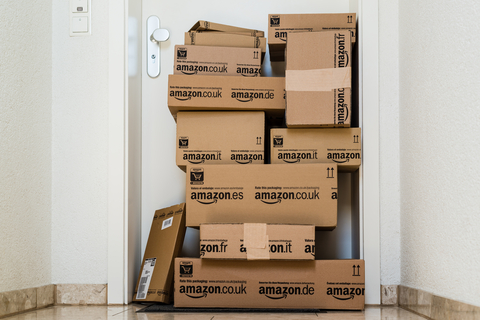
by logisticsplus | May 12, 2015 | News
 If you’re an Amazon retailer or seller, here are 6 steps to getting your product to your FBA warehouse (Fulfillment By Amazon), according to Michael D. Marani, author of The Amazon Sales Formula (available in e-book format on Amazon.com).
If you’re an Amazon retailer or seller, here are 6 steps to getting your product to your FBA warehouse (Fulfillment By Amazon), according to Michael D. Marani, author of The Amazon Sales Formula (available in e-book format on Amazon.com).
- Ask your supplier what the weight of each master carton is, and what the dimensions are.
- Ask your supplier for the exact address.
- Ask your supplier to provide you with a quote for your units including shipping. If they ask you if you have a preference, then respond saying that you would like the most affordable option.
- Contact Logistics Plus at www.logisticsplus.com/Amazon and use the weight and dimension information that your supplier provided along with the supplier address to help provide you with an accurate quote. Don’t worry if you miss something important – Logistics Plus will work with you to get the information needed.
- Choose the most affordable option.
- Communicate this choice with your supplier.
In his e-book, Mr. Marani goes on to suggest that some people will disagree with only seeking two options for shipping. However, he is a firm believer that some times too many options can lead to analysis paralysis. If you look hard enough, you can always find somebody cheaper, but if you truly value your time, you’ll quickly realize that you’re going to get quick and fair quote from Logistics Plus, and you’ll be keeping your supplier honest in the process.
Some Amazon sellers like to have their product shipped to their homes or businesses before sending them off to the FBA warehouse. That way they can inspect their product and make sure they received exactly what they ordered. Alternatively, Logistics Plus can provide this same service. If you ask, we will ship your product to one of our many warehouses around the country and then we’ll inspect your product and send you photographs for your review before sending it off to your FBA warehouse. If your order is faulty or not to specifications, you can let your supplier know so that they will be sure not to slack off when fulfilling your next order because they know you’ll be looking!
The Amazon Sales Formula provides additional step-by-step instructions on how best to sell on Amazon. Just remember, when you work with Logistics Plus – we take care of the customs, transportation and logistics so that you can stay focused on selling your products! If you have any questions, feel free to email us at amazonretail@logisticsplus.com or click the button below to get started.

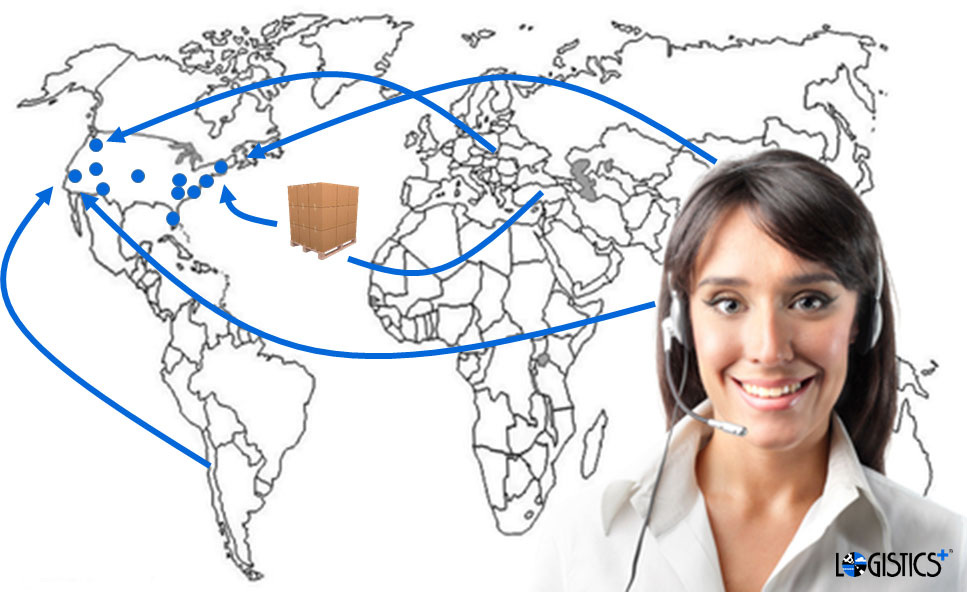
by logisticsplus | Jan 16, 2015 | News
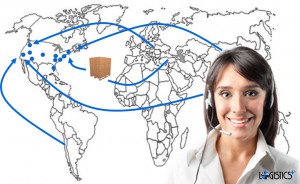
Congratulations on creating your new retail business! You’ve set up a cool new website, you’ve found a low-cost source for your merchandise using overseas manufacturing, and you have seller accounts set up on Amazon.com and eBay.com. Now you need to get your products into the United States and deliver them to your warehouse or fulfillment centers. Unfortunately, incoterms, customs regulations, duties, and freight transportation are not your areas of expertise. No worries, Logistics Plus has helped many other retailers, just like you, get their products imported and delivered to where they need to go – easily, quickly, and affordably.
When you work with us for your import shipping, you get access to the entire Logistics Plus® network of resources. That’s over 350 talented and dedicated logistics professionals in nearly 40 offices across 20 countries; capabilities across all modes of transportation, including air, ocean, ground, and rail; and expertise in customs brokerage, regulations, duties, tariffs, taxes, documentation, and everything else involved in importing goods from a foreign country. Importing to Amazon fulfillment centers doesn’t have to be worrisome or complex. Whether you need only freight shipping from the U.S. port to your fulfillment center or complete door-to-door transportation from the manufacturer to the destination – Logistics Plus can help you with it all. And if you’re also selling your goods in Europe, Asia or elsewhere – we can help you with those moves too.
You have a retail business to run and products to sell – that’s your specialty. If you’d like to keep your focus on that part of your business, let us help you with the logistics side of things. Join the countless other retailers who turned to Logistics Plus for their imports and international shipping needs. You’ll quickly discover how we put the “plus” in logistics by doing all of the little things you need to succeed! To get started, send us an email to quotes@logisticsplus.com or give us a call at 1.866.LOG.PLUS! (1.866.564.7587).
Page 6 of 6« First«...23456

 According to a U.S. Department of Commerce report, over 185,000 U.S. companies imported foreign goods in 2012, an increase of more than 10 percent from 2009. The majority of these businesses were small or medium-sized companies that may, in fact, lack the necessary resources to be a successful importer. If your business imports – or is planning to import – foreign goods, here are ten (10) keys to successfully navigating the complex waters of international trade.
According to a U.S. Department of Commerce report, over 185,000 U.S. companies imported foreign goods in 2012, an increase of more than 10 percent from 2009. The majority of these businesses were small or medium-sized companies that may, in fact, lack the necessary resources to be a successful importer. If your business imports – or is planning to import – foreign goods, here are ten (10) keys to successfully navigating the complex waters of international trade.










